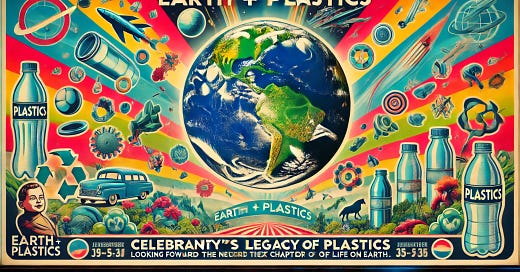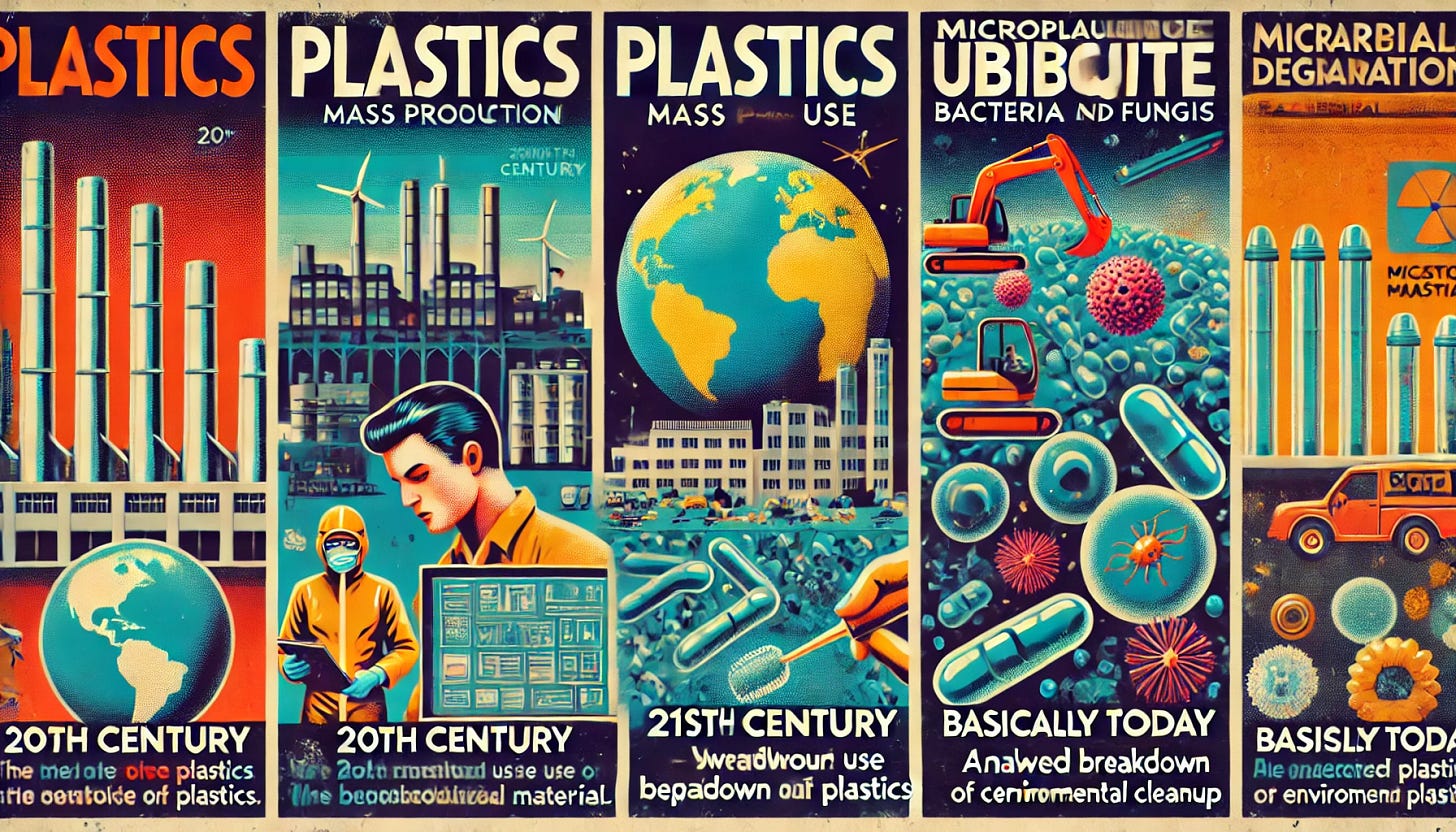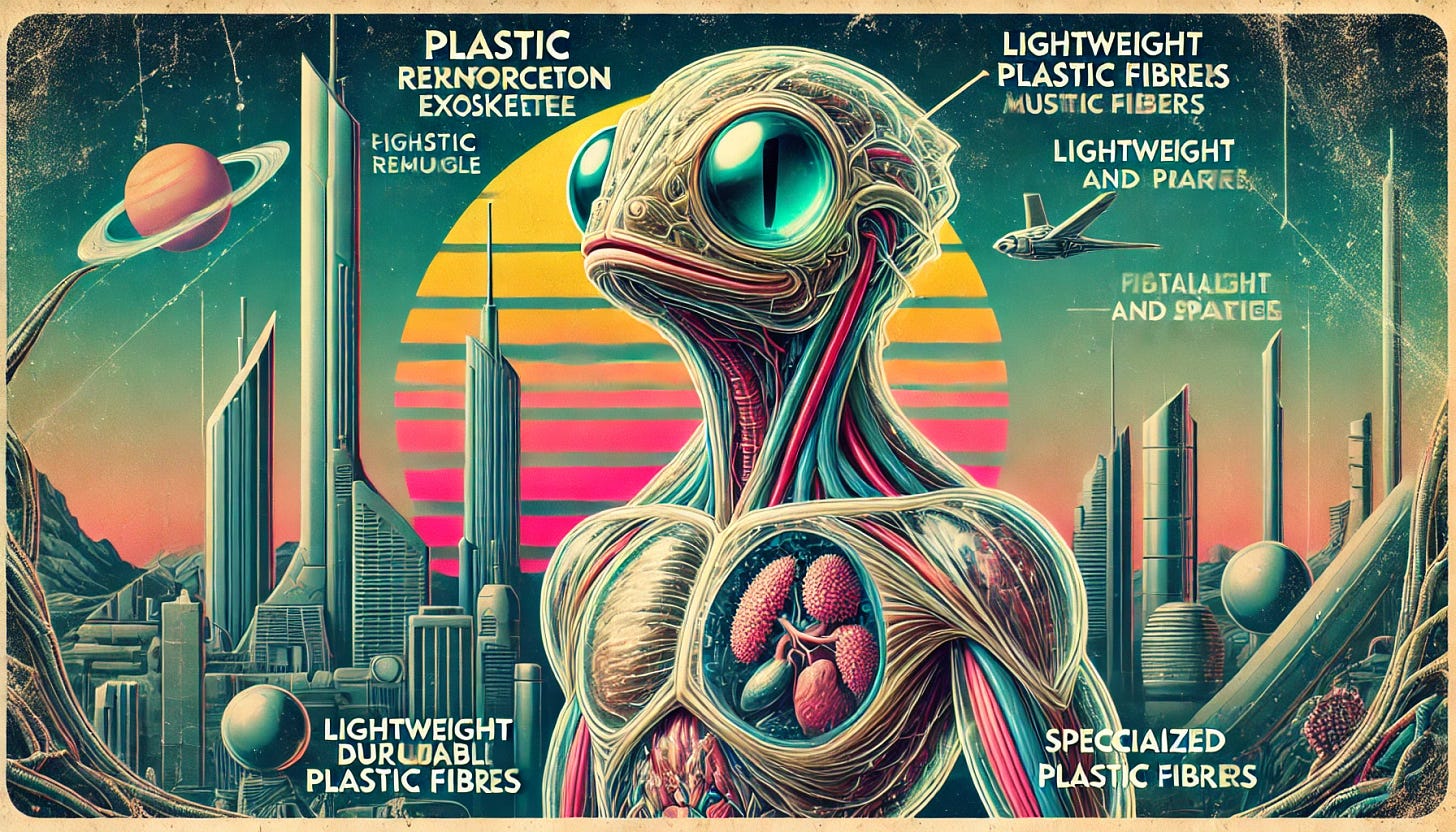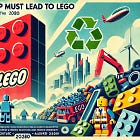On gracefully embracing humanity’s extinction, I always return to this George Carlin joke:
"The planet has been here 4.5 billion years...and we have the conceit to think that somehow we're a threat... The planet will be here for a long, long, long time after we're gone. And if it's true that plastic is not degradable, well, the planet will simply incorporate plastic into a new paradigm: the Earth plus plastic." — George Carlin
Inspired by this idea, I present the timeline of “Earth plus Plastic,” before us and after us…
»»In case it’s not obvious. Please note this is for entertainment and more or less fictional, I’m not sure about any of the dates, nor indeed if it happened the way I described.««
A Brief History of the Earth plus Plastic
4.5 billion years ago: First ATP Formation - Dramatically improved energy storage and transfer capabilities in cells. ⚡
4.4 billion years ago: Emergence of Fats/Lipids - Enabled formation of cell membranes. 🧬
4.3 billion years ago: Cellular Processes: ATP Utilization - Boosted cellular energy efficiency with mitochondria evolution. 🔋
4.2 billion years ago: Carbohydrates Emergence - Provided a new energy source and structural component for cells. 🍞
4.2 billion years ago: Metabolic Pathways: Glycolysis - Enhanced energy production through more efficient metabolic pathways. 🧪
4.1 billion years ago: Energy Transfer: ATP/ADP Cycle - Facilitated quick and efficient energy transfer within cells. 🔄
3.4 billion years ago: Structural: Cellulose in Plant Walls - Strengthened plant structures and enabled larger plant growth. 🌿
3.3 billion years ago: Metabolic Pathways: Gluconeogenesis - Allowed synthesis of glucose from non-carbohydrates by plants, ensuring energy supply. 🔄
3.3 billion years ago: Storage: Adipose Tissue for Lipids - Increased energy reserve capacity by 10X compared to proteins. 🗄️
3.3 billion years ago: Metabolic Pathways: Beta-Oxidation - Improved energy extraction from fats. 🔋
3.3 billion years ago: Insulation: Thermal Insulation by Fat - Provided protection and temperature regulation. 🧣
3.3 billion years ago: Storage: Glycogen and Starch - Optimized energy storage in animals and plants. 📦
3.3 billion years ago: Signaling: Glycoproteins and Glycolipids - Enhanced cellular communication and signaling. 📡
600 million years ago: Structural: Chitin in Exoskeletons - Strengthened protective exoskeletons of arthropods. 🦀
20th century: Plastics: Mass Production - Widespread use revolutionized material. 🏭
21st century: Microplastics Ubiquity - Microplastics became pervasive in the environment. 🌍
Basically Today: Microbial Degradation: Bacteria and Fungi - Enabled breakdown of certain plastics, aiding environmental cleanup. 🦠
…WE ARE HERE NOW…
1000 years later: Storage: Plastic-Derived Vacuoles - 10X higher energy density stored than using fats/lipids in microorganisms and plants. 📦
1 million years later: Protective Layers: Plastic-Infused Dermis - Enhanced protection from elements in certain organisms. 🦾
100 million years later: Structural: Plastic-Reinforced Exoskeletons - Strengthened bones or exoskeletons. 🦋
600 million years later: Metabolic: Specialized Organs for Plastics - Higher organisms process and utilize plastics as an energy source. 🍽️
1 billion years later: Sensory: Polymer-Based Sensory Organs - Advanced sensory capabilities and body compositions. 👁️
2 billion years later: Intelligent Plastic-Based Organisms - Development of complex, sentient beings with plastic-based biology with lifespans of over millennia. 🧠
So, … if you were wondering why we have been here: Plastics. That’s it. Our whole legacy was to make plastics. And we’ve done it! Hats off to humanity! Now enjoy the rest of our time and make way for the next chapter of life on Earth.
Oh, … And comedy. We left behind a lot of laughs, still floating through the cosmos as radio waves of our broadcasts and shows. I hope that someday, somewhere, someone will get a laugh out from the fun we’ve had in this universe.
The George Carlin Bit I’m talking about:
Oddtopia
noun
Neither utopia nor dystopia, but a cultural milieu defined by an (over)embracing of quirky, idiosyncratic societal norms.
If you missed the others, check them out here:











